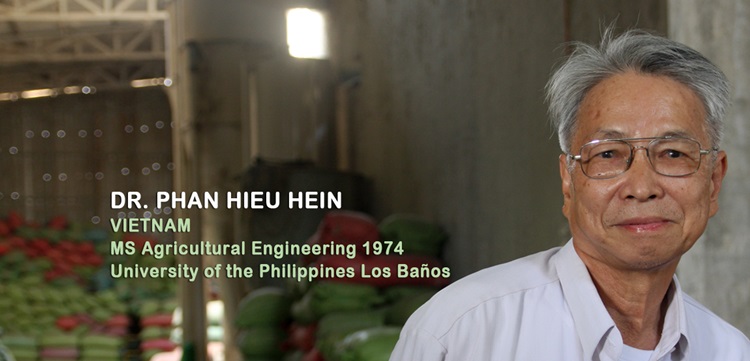Dr. Hien has been working on developing agricultural machineries to boost rice production even in the early 70’s. His thesis during his Master’s degree, which he completed under the SEARCA scholarship in 1974 at the University of the Philippines Los Baños, was evaluating a rice stripper harvester technology. He also designed and introduced an adaptation of the International Rice Research Institute (IRRI) axial-flow thresher also in 1974, a mechanical reaper developed through IRRI and China collaboration in 1984, and the PhilRice mini-combine harvester in 2004. All of these have been adopted and improved by the farmer-mechanics in the Mekong Delta, which Dr. Hien consider as part of a “research-extension cycle.”
“What I enjoy most about local farmers is that they adopt [the machines] it and they modify and improve it,” Dr. Hien exclaims. He also added that without these local farmer mechanics using, improving and promoting their machines, extension would be limited.
But his most outstanding innovation is his flat-bed dryer that uses rice husks as fuel. The first generation dryer, introduced in the mid 80’s in Soc-Trang province, was able to process hundreds of tons of wet paddy for the first time in the Mekong Delta. It enabled farmers to dry their harvests in a mechanical dryer and not sun-dried on the ground, on pavements or roads.
The technology, which has been continuously improved by his colleagues and farmer-mechanics based on the previous models are responsible for drying around 10 to 50 tons of rice per batch. Even during dry season, more farmers prefer using the flat bed dryer because there is less grain breakage.
It is worthwhile to note that while the agricultural machineries that Dr. Hien and his team have developed are now widespread in the Mekong Delta and other countries, profit is not the bottom line. According to his colleagues, what Dr. Hien has received for his hard work was the respect and trust of the people.
In his 33 years of teaching and research at Nong Lam University, he became the head of the Department of Agricultural Machinery, co-holder of 4 patents on dryers, and was able to publish about 30 articles and 6 books in Vietnamese. He also mentored a lot of undergraduate and graduate students, some of whom are now his colleagues in his research and extension work. And while he has retired from the university, he is still very much engaged with the promotion of the laser-controlled land leveling technology in Vietnam, which he and his colleagues developed in 2005. In 2008, he received the much coveted “People’s Teacher” bestowed by no less than the President of Vietnam.
With his significant contribution in the advancement of mechanized rice production in Vietnam and other countries, Dr. Hien has been considered one of SEARCA’s Outstanding SEARCA Scholarship Alumni awardees. The award gives recognition to SEARCA’s graduate alumni who have personified SEARCA’s values and philosophy and have distinguished themselves through their personal achievements, professional accomplishments, public service, and other meritorious endeavors. This is the first time since its establishment that SEARCA will be giving such prestigious recognition to its alumni, who it considers as ambassadors for agriculture and rural development in the region. Dr. Hien and 10 other OSSA laureates will be awarded during SEARCA’s golden anniversary celebration on 25 November 2016.
